 |
These are photos of Ginkgo
biloba trees in
Be patient, they load quite fast. More details about the locations and the trees on my Where-page. |
 |
 |
These are photos of Ginkgo
biloba trees in
Be patient, they load quite fast. More details about the locations and the trees on my Where-page. |
 |
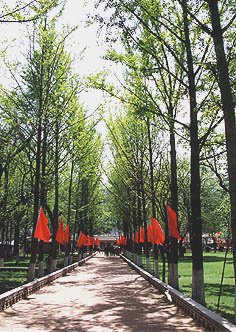
Ginkgo trees in Yan'an city (Shaanxi
|

Old Ginkgo biloba in Liu Yuan (Lingering
|
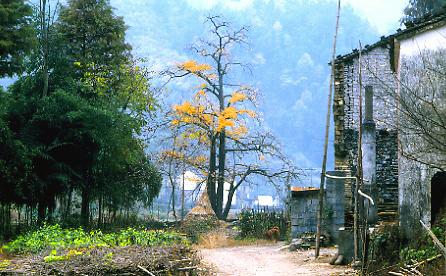
Zhjiang Province, Yang village, Fuyang Photo Jimmy Shen photo Jimmy Shen |
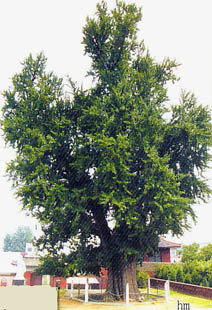
Xincun town, Tancheng city (Shangdong province). About 2,100 years, male, 37 m, with grafted female branches, girth 7,2 m. Photo HeMeng |

TianMuShan region, exact location: Xialin Village, QingLianfeng Town, LinAn, Zhejiang Photo Jimmy Shen photo Jimmy Shen |
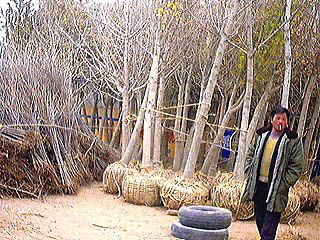
Ginkgo market, XingCun town, Shangdong province Photo HeMeng |

Shaolin temple, Henan Prov. Photo Marc Bautry |
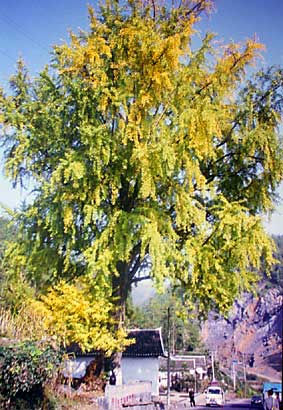
Lichuan county, Hubei province In this province are many Ginkgo trees, possibly growing in the wild. Photo Wei Gong |

Ginkgo with many chichi near the Tianshi cave at the Qingcheng Mountain, Chengdu, Sichuan province. It is said to be planted by a Taoist in the East-han dynasty (25-220 AD), so the tree is more than 1500 years old. Photo Hanghui Kong |
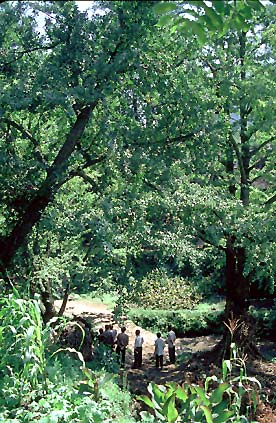 |
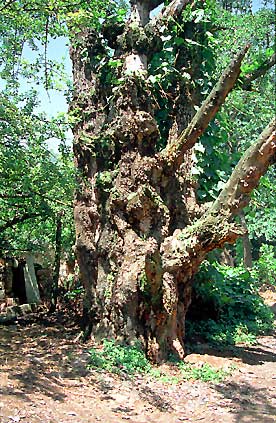 |
| . | . |


An ancient female Ginkgo tree growing in Yang
Tang village, Zhejiang province, in China.
The tree had a diameter of 231 cm and was
33 m tall in 1989.
In 1988 the tree produced 379 kilograms of
cleaned seeds.
Photo Peter Del Tredici.
From: Del Tredici P, Ginkgo biloba, Enzyklopädie der Holzgewächse:
Handbuch und Atlas der Dendrologie
- 6. Erg. Lfg., 10 pp. Ecomed Verlag, Landsberg, 1996.
|
Many photos and info on my special pages: |

|
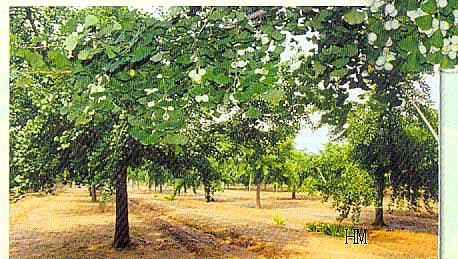 Photo HeMeng |
The seedsprocessing in China is done by knocking
them off the trees in mid-September with long bamboo poles or they are
collected from the ground shortly after they fall.
Then they are put in plastic containers for
a few days until the fleshy outer coat begins to soften, then washed in
running water so that the fleshy outer coat rises to the top and can be
poured off, leaving the heavy nuts to sink to the bottom. After that
they are spread out to air-dry for 1-2 weeks and then they are bundled
up and put in a cool environment for storage.
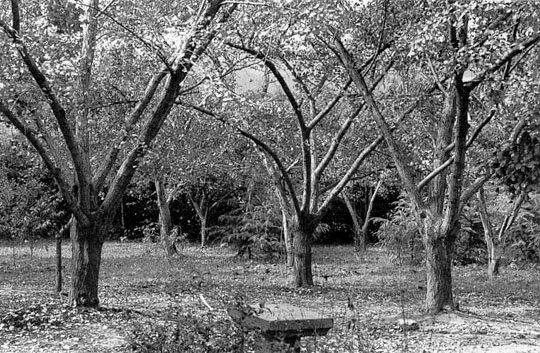
A grove of grafted Ginkgo trees cultivated
for their edible nuts on Dongting Shan, Jiangsu Province.
The cultivar is generally grafted onto a seedling
rootstock. The trees grow then vase-shaped
(topophytic effect). Usually 3-5% is male,
sometimes a male branch is manually placed
within the crown of the female trees during
the time of pollination.
700,000-800,000 trees produce an average of
6-7 thousand tons of dried nuts per year (1997).
Photo Peter Del Tredici.
From: Del Tredici P, Ginkgos and people, a thousand years of interaction;
Arnoldia, 51, 2-15, 1991.
Beijing
(Peking)
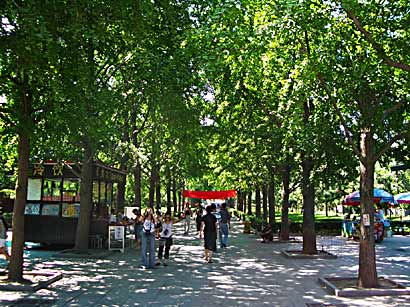
Ginkgo trees at Lama Temple. photo: Ruurt Stapel |
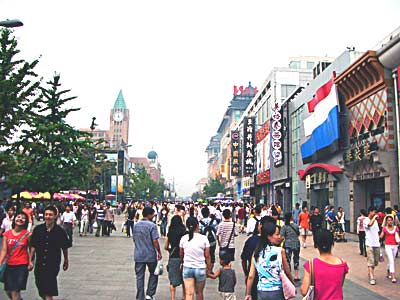
Beijing (Peking) Near the new shopping center close the Forbidden City. |
| . | . |
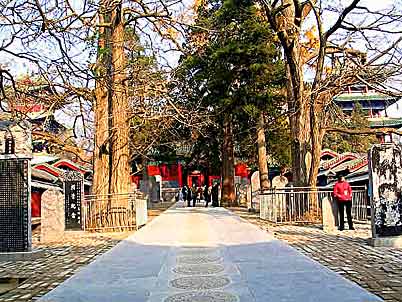
Henan, Zhengzhou View of Drum Tower, left, and Bell Tower, right, through leafless Ginkgo trees at Shaolin Temple near entrance gate. |
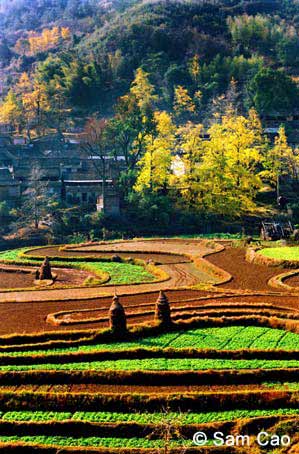
Hai Yang Xiang, Guilin City, Guangxi, P.R. Photo Prof. Fuliang (Sam) Cao, Nanjing Forestry University |
| . | . |
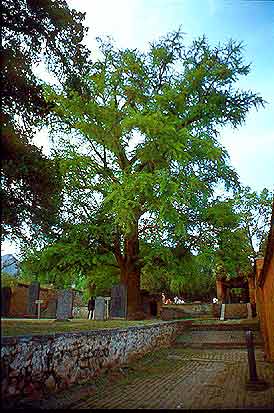
SongShan : Shaolinshi, 1,400 years old Photo Johan Staels |

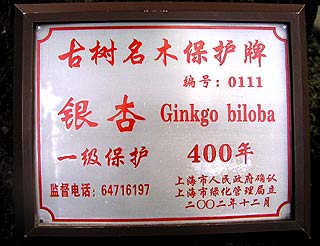
Ginkgo of c. 1600 in Yu-garden, Shanghai Photo Wieland Haak/Constanze Krone |
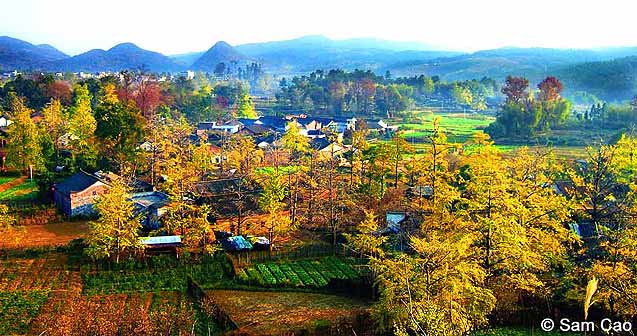
Hai Yang Xiang, Guilin City, Guangxi, P.R.
Photo Prof. Fuliang (Sam)
Cao, Nanjing Forestry University
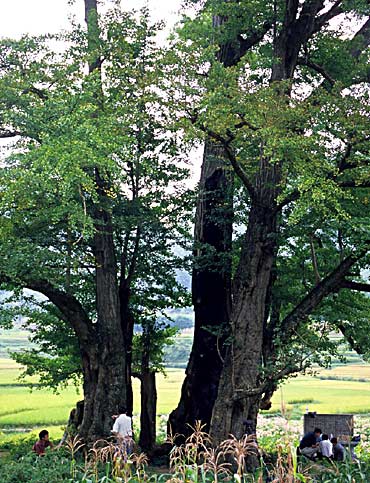
Guizhou province: Li Jiawan Grand Ginkgo King,
c. 100 km west of Guiyang,30 m, male,
c. 4,000-4,500 years old,
biggest Ginkgo tree in the world
(Guinness
Book of World Records 1998)
Photo Peter del Tredici (Arnoldia
2009, vol. 66, no. 3)
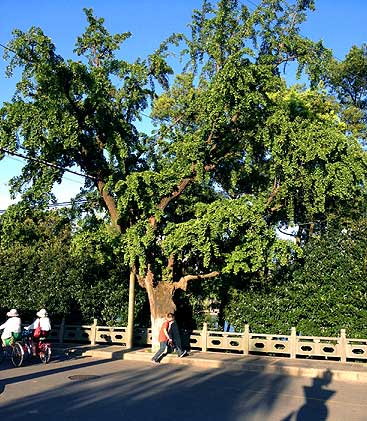
close to Moon-lake Park in Ningbo city, Zhejiang
Province
photo: Sumate Tanutantivong
© Cor Kwant